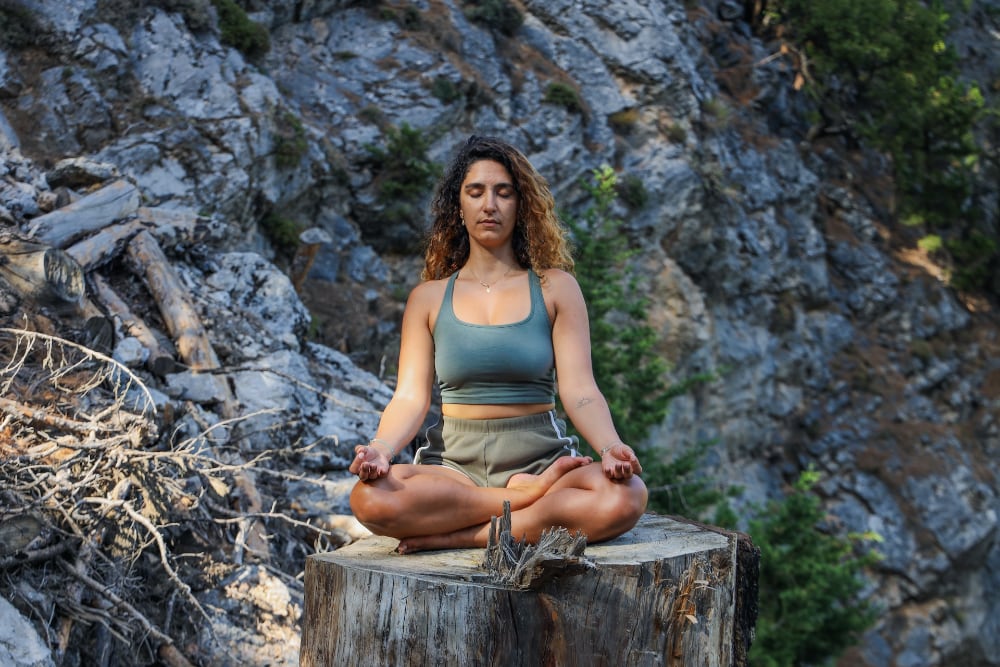Effects Of Asana and Pranayama on The Body and Mind
by Sohaila Akbar
Asana and Pranayama are probably the two limbs of Ashtanga Yoga most popular among the masses. Why do we practise these, and how exactly do they benefit us? Well, it is impossible to list down everything in an article simply because the benefits are immense, and not just physically or mentally, but spiritually too, for those who seek it. Nevertheless, let’s look at how Asana and Pranayama practices help us in our day to day lives as well as in the long run.

Asana, when simply translated to English, means ‘posture’. In reality though, it encompasses much more than that. Chapter 2, verse 46 of the Yoga Sutras of Patanjali mentions:
स्थिरसुखम् आसनम्
(sthirasukham aasanam)
It means: Posture (asana) is that which is steady and pleasant. We need to remember that in order to benefit from the practice, else the joy and the essence of the practice will be lost. After all, the purpose of Asana is to make us feel better, and not worse, after the practice. So, it is important to practise with awareness. These physical movements, when combined with proper breathing techniques, work not only on the physical body but also the mind, leading to an overall sense of health and well-being.
So first, let’s look at the major benefits of Asana.
1. Flexibility and mobility: These are probably the most visible and sought-after benefits of Asana practice. Even preparatory practices like the pawanmuktana series work on opening up the major as well as minor joints of the body and relaxing various muscle groups.
2. Improve muscular health: The blood flow to the muscles is improved, and holding a posture improves muscular coordination and strength.
3. Improve posture and Balance: It’s essential to focus on skeletal alignment and the distribution of weight while practising asanas. Numerous postures work on the mobility and flexibility of the spine itself. This greatly improves the overall posture and physical balance, while correcting minor postural ailments.
4. Rest and relaxation: This can be achieved through the restorative asana practices that give relief from muscle soreness and tension.
5. Physical therapy: asanas have immense therapeutic benefits, if practised correctly. They can help by detoxifying particular groups of muscles or organs, and strengthening them.
6. Improves the overall physiological health: Certain disciplines of Hatha Yoga like Vinyasa or even Surya Namaskar benefit the cardiovascular system by increasing the heart rate and improving blood circulation. Certain asanas massage the digestive, reproductive and excretory organs, thereby improving their functions by keeping them in good health. Balancing and relaxing asanas hugely benefit the nervous system of the body, which in turns improves the mind-body coordination.
7. Prepares the body for pranayama and meditation practices: There are certain meditative sitting postures like sukhasana, vajrasana and padmasana which prepare the practitioner to sit comfortable for extended periods of time without discomfort, which are prerequisites for pranayama and meditation.
Now, what is pranayama? In simple terms, it is the practice of regulating one’s breath. Hatha Yoga Pradipika verse 2 states:
चले वाते चलं चित्तं निश्चले निश्चलं भवेत् ।
योगी स्थाणुत्वम् आप्नोति ततो वायुं निरोधयेत् ॥
It means that if respiration is disturbed, the mind becomes disturbed. By restraining respiration, the Yogi gets steadiness of mind.
Even though the main objective of pranayama is to awaken the higher consciousness, a consistent practitioner will experience benefits at the physical and physiological level too. Let’s look at some major effects of Pranayama on the body and mind.
1. Respiratory system: The lungs and diaphragm are exercised while practising the various pranayama techniques that include rapid, slow or deep breathing. The chest is fully expanded and the lungs are stretched, strengthening the respiratory muscles while also improving lung capacity. They function more efficiently as a result of this.
2. Digestive system: The movement of the abdomen due to the rapid inhalation and exhalation of the air in certain techniques stimulate the stomach and the intestinal wall, helping in better digestion, and elimination of waste matter.
3. Nervous system: Deep breathing activates the parasympathetic nervous system and signals us to calm down. A better nervous system leads to a better mind-body connection, as the neural pathways are responsible for transmitting signals between the mind and body for controlling our everyday functions.
4. Establishes better breathing patterns: When we follow specific breathing techniques in pranayama, we focus on regulating our breathing patterns, which can otherwise be erratic due to our hectic lifestyles. Irregular breathing disrupts brain function which leads to mental, emotional and physical blockages which further trigger lifestyle diseases. Regular pranayama practice can help us stay away from it.
In Yoga, one important facet is the practice of Asana and pranayama combined. After all, asana practice with incorrect breathing is not conducive to better health. Both these limbs of Yoga work in tandem to provide us with good health, so let’s look at this aspect in a little more detail.
1. Improves energy: Asana helps in clearing physical blockages in the body like muscular tension and stiffness. Then the physical body allows the prana to flow freely, improving overall energy.
2. Therapeutic benefits: Shallow breathing and clenched muscles are unconscious responses to stress. Restorative asanas when combines with deep and slow breathing alleviate stress from both the body and mind. Emotional strain causes the release of stress hormones which constrict the blood vessels and raise blood pressure, among other things. Yoga brings mental and emotional clarity which leads to better decision making in day-to-day life. Also, being able to manage stress can greatly increase productivity. It’s not surprising that corporates all over the world are slowly opening up to yoga classes for their employees.
3. Spiritual benefits: Stillness is not easy to achieve. Asanas and pranayama achieve stillness of mind and body which can help one in their spiritual pursuits. Once an asana is comfortably established, we start focussing more on our breath while holding the posture. And even though breathing is an unconscious process, through practice we learn to take a conscious approach to it. This starts bridging the gap between the conscious and the unconscious areas of the mind.
Together, Asana and Pranayama provide the practitioner with a holistic approach to well-being. These are tools created by the masters of Yoga which are at our disposal. How we use these tools to enhance our quality of living is in our hands.
In the words of B.K. Iyengar, “Yoga is like music. The rhythm of the body, the melody of the mind, and the harmony of the soul creates the symphony of life.”
About the Author

Sohaila Akbar
Sohaila is a Yoga teacher, keen on bringing about positive changes in the lives of others through the knowledge that she has received from her teachers. Prior to this she was a school teacher working towards imparting academic, social and ecological knowledge to young learners. Sohaila is an avid reader of books and have an undying love for fiction. She prefers paperbacks and hardcovers over e-books anyday. She loves travelling, and a good cup of coffee is always welcome!
